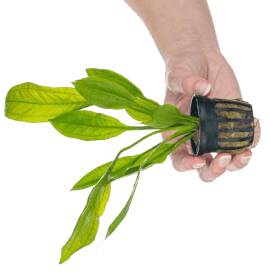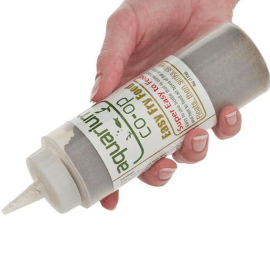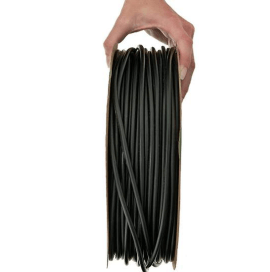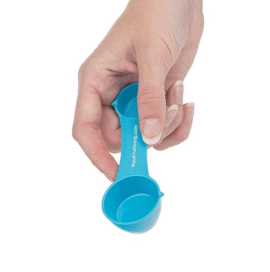How to Set Up (and Maintain) a Brackish Aquarium
If you have been keeping freshwater aquariums for a while, you may feel like you’ve already tried everything in the hobby, such as nano tanks, aquascaping, African cichlids, and ponds. Consider setting up your first brackish fish tank that will allow you to try an entirely new category of animals. Many aquarists get a little nervous about making brackish water, but in our opinion, it is quite easy for anyone who has kept freshwater tanks before. Learn what it takes to create and maintain your first brackish aquarium in this step-by-step guide.
The Pros and Cons of Brackish Water Tanks
Before jumping into this new endeavor, let’s weigh the costs and see if a brackish aquarium is right for you. The main benefit of going brackish is the ability to keep new kinds of aquatic species, including:
- Green spotted puffer (Dichotomyctere nigroviridis)
- Figure 8 puffer (Dichotomyctere ocellatus or Tetraodon biocellatus)
- Bumblebee goby (Brachygobius spp.)
- Knight goby (Stigmatogobius sadanundio)
- Mudskipper (Periophthalmus spp.)
- Banded archerfish (Toxotes jaculatrix)
- Red claw crab (Perisesarma bidens)

Atlantic or West African mudskipper (Periophthalmus barbarous)
You can try breeding amano shrimp and nerite snails, whose offspring only survive in brackish water. Plus, certain freshwater fish like guppies and mollies can do well in brackish water.
One of the advantages of putting certain livebearers in a brackish tank is that brackish water contains all the trace minerals and water parameters necessary for maintaining optimal health in these species. Plus, many freshwater diseases and parasites cannot survive in brackish water. Therefore, fish farms often breed livebearers in part fresh and part salt water to raise healthier stock and save costs.
Also, put your mind at ease because brackish aquariums do not require a precise amount of salt. Unlike the corals in saltwater reef tanks, brackish species are used to fluctuating conditions because they live in estuaries where rivers and streams meet the ocean. Depending on the tides or rainfall, they can experience full fresh water or full salt water all within the same day. Your fish will be fine as long as they have the bare minimum amount of salt (see below for more details).

Estuary in California where fresh water mixes with salt water
Conversely, brackish tanks do limit you on the types of animals and plants you can keep. Moreover, these species are sometimes hard to find since most fish stores don’t specialize in brackish water. Tank maintenance does require some additional steps for adding the right amount of salt and measuring the specific gravity (SG) of the water. Finally, salt creep or leftover salt residue can occur in areas where water splashes out of the tank, but you can easily wipe it off with a damp cloth or install some craft mesh over the tank lid holes to mitigate it.
Materials List for a Brackish Aquarium
The supplies you need for a brackish tank are almost exactly the same as a freshwater tank — such as a fish tank, aquarium stand (optional), lid, light, heater, thermometer, filter, dechlorinator, and aquarium siphon. In terms of substrate, you can use regular gravel, sand, or other inert products. However, if you have soft water with low pH, we highly recommend getting aragonite or crushed coral to help buffer the water and replicate a semi-marine environment.
For the salt, you must buy marine or reef salt meant for saltwater aquariums, not regular aquarium salt used for freshwater aquariums. Aquarium salt is made of sodium chloride (NaCl), but marine salt contains sodium chloride and many other essential minerals, like magnesium, potassium, and calcium. In order to monitor the amount of salt in the water, we suggest purchasing a refractometer to measure specific gravity (SG). Yes, they are slightly more expensive than a hydrometer, but we find them to be more accurate and easier to use, especially since you don’t have to get your hands wet in the process.

Refractometer for measuring the specific gravity or amount of salt in the water
What plants live in brackish water? While the internet has many lists of brackish-safe plants, in our experience most plants struggle when salt is introduced. The mangrove tree is the only surefire plant we know of that handles everything from full fresh to full salt water. For our personal tanks, we buy live mangrove seedlings from online websites and then hang them on the side of our aquariums using heavy duty plant wire so that the end of the seedling with leaves is out of water. Once it starts growing more leaves, we have a dedicated light source shining on the mangrove to make sure it gets enough light. In brackish aquariums, you may need to occasionally wipe off any salt spray on the leaves to make sure it can still photosynthesize. Once the mangrove is tall enough, you can plant it in an aquarium with deeper substrate and add root tabs to feed it.
The other plant we have had success with is java fern. However, it had to be slowly acclimated from freshwater to low end brackish water (SG of 1.005) over the course of two to three months. While the plant has not died, it does not grow very quickly either. The other commonly available “brackish” plants, like anubias and hornwort, only seem to handle extremely low salinity levels that would not be acceptable for most brackish animals.

Java fern (Microsorum pteropus)
How to Set Up a Brackish Aquarium
Again, most of the instructions are very similar to installing a freshwater aquarium, so we will focus our attention on how to prepare the water. The goal is to reach a specific gravity between 1.004-1.012. We personally keep most of our brackish tanks at 1.005-1.008.
- Find a location for the fish tank and assemble the aquarium stand if needed.
- Rinse the tank and accessories in fresh water without using soap. If using aragonite or crushed coral, make sure to rinse the substrate multiple times to minimize cloudy water issues.
- Place the aquarium on the stand and add the substrate, equipment, and decorations.
- Fill the aquarium with dechlorinated water.
- If you plan on slowly acclimating your fish and plants from fresh water to brackish water, then just add normal drinking water as usual without any salt.
- If you want brackish water from the start, fill 80% of the tank with fresh water and scoop in 2 tablespoons (Tbsp) of reef salt per gallon of water. Let the filter or powerhead circulation dissolve the salt, and then check the specific gravity after approximately 8 hours. Depending on the refractometer reading, continue adding fresh water and marine salt as needed until the desired SG is reached.
- Install the aquarium lid and light.
If this is a brand-new setup, you need to cycle your aquarium before adding any fish to ensure that the fish tank’s ecosystem can safely process the toxic ammonia produce by your fish’s waste. The methods for cycling a freshwater tank versus a brackish tank are the same (except that plants are not as easily used in brackish water), so read our article on aquarium cycling for more information.

Knight goby (Stigmatogobius sadanundio)
How to Acclimate New Fish for a Brackish Tank
Most brackish fish that are sold at fish stores are usually kept in freshwater environments. If this is the case for the animals you have purchased, you will need to spend at least four weeks gradually adapting their bodies to brackish water. If you are setting up a new aquarium, use Step 4a from the above instructions to make a fully freshwater tank. Once it is cycled, add the fish and slowly add marine salt over the course of four weeks until you achieve the required SG.
If you already have an established brackish aquarium with fish and you want to add new animals that are accustomed to fresh water, set up a separate quarantine tank or tub that is fully fresh water. Then use the same method as before to incrementally raise the SG until it matches your established tank. Because the animals are in a quarantine system where salt is being added, some parasites and diseases may be eliminated in the process, which is a nice side benefit.

Banded archerfish (Toxotes jaculatrix)
How to Change Water and Maintain a Brackish Water Tank
When it comes to tank maintenance, the steps are exactly the same except for the water preparation. Because salt is taken out during water changes, you must keep track of how much water is removed to keep the salinity the same. For example, let’s say you decide to do a 50% water change on a 20-gallon aquarium. Based on our starting concentration of 2 Tbsp of salt per gallon, that means you will need to add back in 10 gallons of dechlorinated water and 20 tablespoons (or 1¼ cup) of salt. The preferred method recommended by reef salt manufacturers is to premix the water and salt in a bucket or tub. Therefore, you can fill up two 5-gallon buckets with 10 Tbsp of salt each. Marine salt dissolves very quickly, so either stir the water by hand, add an air stone, or use a power head to mix together large volumes of water. Pour the brackish water into the aquarium and then measure the tank’s SG after a few hours have passed. Sprinkle additional salt in the tank to raise the SG, or remove some tank water and replace it with fresh dechlorinated water to decrease the SG.
Remember that brackish fish can live in a wide range of salinity, so do not worry too much about adding salt directly into the tank if needed. We like to dump it around the filter output or power head for faster distribution. Also, if the water in the aquarium is too low and you need to top off (or replace) the evaporated water, add fresh water only. Salt does not evaporate, so do not add more brackish water or else the SG will increase.
How often should you check salinity? We test the SG after every water change, usually within a few hours or the next day.

Bumblebee goby (Brachygobius doriae)
In summary, brackish water tanks can be very enjoyable, especially when you consider all the unique species that you can start keeping. They are much easier than saltwater reef tanks, and if you are confident with keeping freshwater aquariums, you will be successful with brackish ones. If you have any more questions, please visit our forum and many experienced brackish fishkeepers will be happy to help you.




